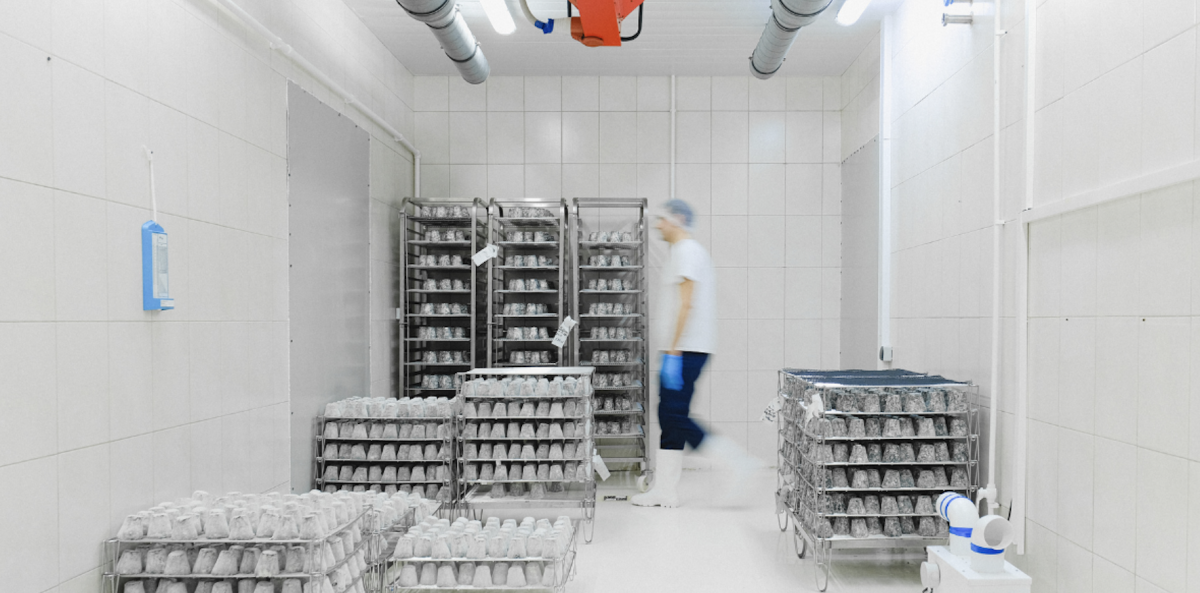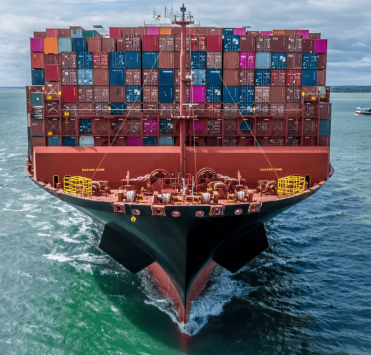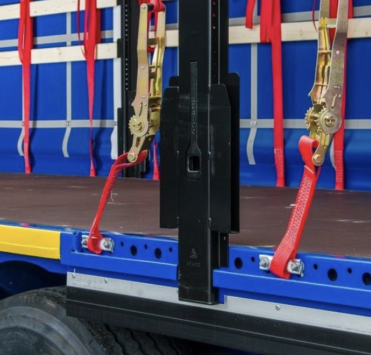Temperature control in road transport and container logistics: why it matters for B2B

Temperature control in logistics is a set of measures aimed at maintaining a certain temperature inside a transport unit (vehicle, container, warehouse, etc.) throughout the entire supply chain. This is a key aspect when transporting goods that are sensitive to temperature changes. Such goods include food, medicines, chemical products, cosmetics, and some technical materials.
The temperature regime may vary depending on the type of cargo:
- Deep freezing (below −18 °C)
- Freezing (from −10 to −18 °C)
- Cooling (from 0 to +8 °C)
- Controlled temperature (from +15 to +25 °C)
- Warm mode (above +25 °C, less commonly used, e.g., for certain oils and chemicals)
Special technical means are used to maintain these temperatures, such as isothermal vans, refrigerators, thermocontainers, and containers with active or passive cooling/heating systems.
The effect of temperature on cargo safety
Even a slight deviation from the temperature norm can lead to damage to the cargo, a decrease in its quality, or complete unsuitability for use. For example, food products may start to rot or multiply pathogenic microorganisms if the temperature regime is violated. Medicines lose their effectiveness, and chemicals can change their composition and become dangerous or useless.
For B2B customers, especially in manufacturing and distribution, such losses are unacceptable. They lead to:
- Financial losses due to spoilage
- Disruptions in production processes
- Returns from partners
- Damage to the company's image
- Termination of contracts
Thus, temperature control is not just a technical characteristic, but a critically important element of business processes.
In which B2B industries is temperature control critical?
- Food industry. All categories of perishable products, from frozen meat to chilled dairy products, require strict temperature control. Violations lead to product spoilage and health risks.
- Pharmaceuticals. Most medicines and vaccines are sensitive to temperature fluctuations. Manufacturers are required to monitor compliance with temperature conditions in accordance with GDP and GSP requirements.
- Chemical industry. Many chemicals and reagents are unstable outside certain temperature conditions. Some can become dangerous when overheated or frozen.
- Cosmetics and perfumes. These can change their properties when the temperature deviates from the norm: their color, smell, and structure change, and they lose their declared properties.
- Electronics and materials. Some components are sensitive to condensation and sudden temperature changes, which can cause corrosion or short circuits.
How temperature-controlled transportation by road is organized
Temperature-controlled road transportation involves the use of:
- Refrigerated trucks — equipped with refrigeration units that maintain the required temperature using a diesel or electric generator.
- Isothermal vans — maintain a set temperature but cannot actively change it. Suitable for short routes and stable weather conditions.
- Tankers with thermal insulation and a heating system — for transporting temperature-sensitive liquid cargo (e.g., oils, fats, syrups).
All modern refrigerated vehicles are equipped with sensors that allow real-time temperature monitoring and recording.
Last mile logistics is also an important element. Even if the cargo is delivered in a refrigerated truck, unloading and temporary storage must also be carried out in accordance with temperature requirements.
Temperature-controlled container transport
Sea and rail transport are often used to deliver goods from remote regions (e.g., China, South Korea, Southeast Asia). The following are used for temperature-sensitive goods:
Reefer containers are standard 20- or 40-foot containers with a refrigeration unit.
- They can maintain temperatures from −30 to +30 °C, sometimes higher.
- Passive refrigerated containers — used on short routes and in multimodal chains.
- Humidity-controlled containers — often used for medicines and electronic components.
During multimodal transport, it is important to ensure the smooth operation of refrigeration units, including at transshipment terminals. The following are used:
- Generator sets for power supply on the railway
- Connection to power grids at ports
- Automatic alarm in case of temperature deviation
Why temperature logistics is important in B2B
B2B partnerships are built on reliability, transparency, and reproducibility of processes. Customers expect their shipments to arrive in perfect condition and on time. Temperature-controlled logistics in B2B allows you to:
- Ensure that products comply with sanitary and technical standards
- Avoid complaints, disputes, and returns
- Improve customer satisfaction
- Demonstrate a high level of responsibility and professionalism
- Maintain the image of a reliable supplier or carrier
In addition, B2B contracts increasingly include mandatory documentary confirmation of temperature conditions. This means that the logistics service provider must not only deliver the cargo, but also prove that the temperature regime has not been violated.
Temperature control technologies
Modern technologies allow you to control the temperature at all stages of transportation:
- Temperature sensors with online monitoring
- IoT systems for real-time data collection and analysis
- Automatic generation of temperature reports for the customer
- Predictive analytics to assess the risk of transport conditions being violated
- Thermographs with GPS — for tracking the route and temperature
Heating or cooling solutions are also used in warehouses, terminals, and during intermediate transshipment. This is important in winter and summer, especially in countries with extreme climate fluctuations.
How to choose a logistics partner for temperature-controlled transportation
When choosing a carrier, B2B companies should pay attention to:
- Availability of a new fleet of refrigerated trucks or thermal containers
- Documented experience in temperature-controlled transportation
- Ability to monitor transportation conditions
- Compliance with international standards (GDP, ISO, etc.)
- Reputation in the industry and customer reviews
- Ability to provide multimodal logistics with temperature control at all stages
It is also important that your partner is able to adapt to unusual situations, such as border delays, sudden heat waves, or the need to reroute cargo.
Conclusion
Temperature-controlled logistics is not just about equipment and technology. It is about reliability, accuracy, responsibility, and understanding the specifics of the cargo.
For B2B companies, especially in sensitive industries, temperature control is the key to stable deliveries and long-term success.
By choosing a reliable logistics partner that can guarantee temperature control, businesses protect themselves from risks and increase the value of their offering in the market. This means they gain a competitive advantage.









